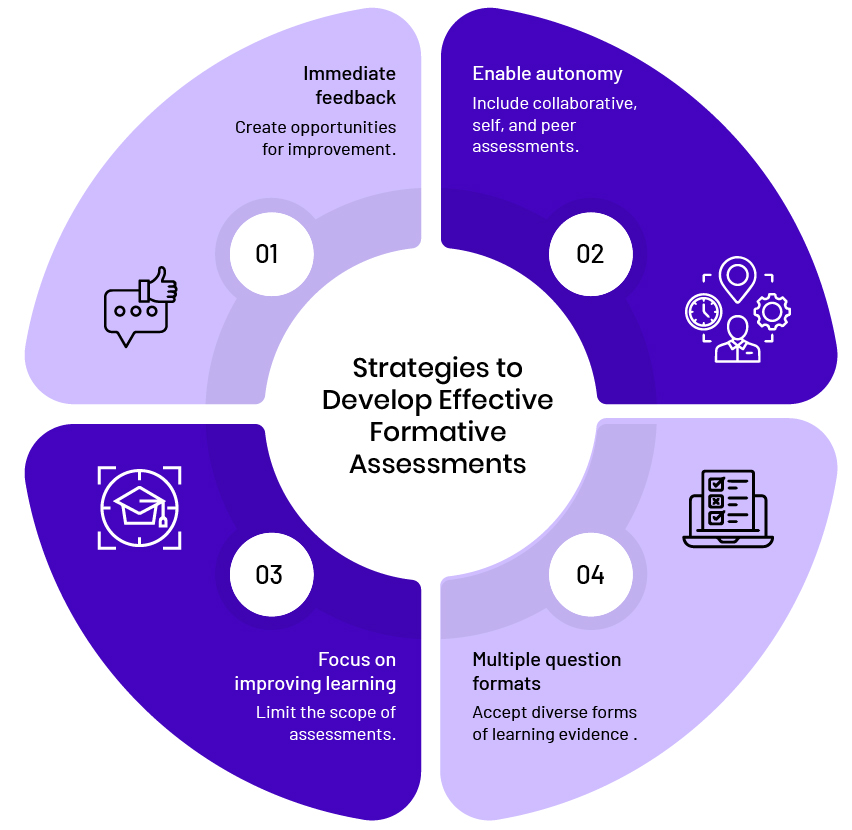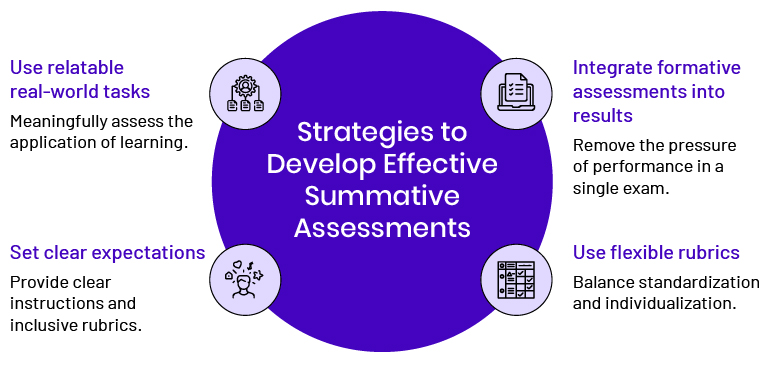Drew, a student with dyslexia, has exceptional memory and imagination. Despite knowing everything, the child needs more time during assessments or text-to-speech assistance to attempt year-end summative assessments. Yet, the evaluation process fails to assess the way the student’s critical thinking and decision-making skills are evolving. Effectively, every student, whether with special needs or not, suffers from the inefficacy of one-size-fits-all assessments. Digitization has drawn attention to making quality education inclusive and seamlessly accessible to all types of learners. It is time for assessments to accommodate diverse learning styles and abilities to effectively evaluate learning assimilation. Innovative summative and formative assessment tools can help educators design rubrics and feedback to evaluate learning more effectively.
Rethinking Assessments
Educators must shift their mindset from evaluating a subject or a topic to assessing and facilitating learners’ progress. Everything that students create, do, or articulate in the context of education is potential evidence of learning. Digital assessment platforms must facilitate ongoing and cumulative evaluation of all forms of learning evidence.
Integrating Formative Assessments
Summative assessment discounts ongoing progress and focuses on achieving learning outcomes. This is why leveraging formative assessment tools is crucial for learning institutions.
According to the Organization for Economic Cooperation and Development (OECD), “assessment is formative if and only if it shapes subsequent learning.” Instead of traditional at-home projects or quick-to-finish assignments, formative assessments must actively engage learners in the learning process. Teachers and students must adopt a mindset of “learning to learn.”
Modern formative assessment tools allow educators to create opportunities for students to showcase improvements in critical-thinking, problem-solving, innovation, etc. They enable the integration of gamified assessments, multi-mode/multilingual evaluations, voice-based responses, etc., to allow students to express all that they have learned in diverse forms. They make room for evaluating communication, process, and significance of solutions to the problems, rather than just the solution. Gen AI-powered formative assessment tools can even offer real-time feedback to give students the necessary push and support, eliminating the stress of performance, while encouraging learning improvement.
Refining Summative Assessments
Learning must have clear and unbiased targets. This means all types of learners should get equitable opportunities to elevate their education level while achieving standardized goals. AI-powered summative assessment tools assist teachers to define learning metrics and evaluate skills that matter. Effective summative assessment tools include ongoing progress and end-of-year outcomes to define learning assimilation. Advanced tools are more reliable as they provide valuable insights for teachers to assess whether the intended learning has occurred. The best summative assessment platforms use real-world tasks and relatable activities with clear instructions to promote transparency and fairness in educational evaluation.
Evaluate the Teaching Process and Assessment Practices
High-stakes summative assessments may push educators to “teach to the test.” Focus on producing results may also impact assessment quality. This necessitates the monitoring of formative and summative assessment platforms for the overall benefit of students. Adopting tools powered by advanced learning analytics to gather and report deep insights on students’ progress and the efficacy of pedagogy is crucial to improving subsequent learning. These summative assessment tools facilitate personalization of instruction, assessments, and feedback, which improves learner satisfaction and retention.
They also quantify learner engagement, and progress to effectively evaluate pedagogy. This includes instruction efficacy, assessment efficacy, time spent, number of re-attempts required, etc., to make informed decisions. Data-driven content development, instruction, and assessment creation decisions while adhering to data privacy and security guidelines can work as a differentiator for edtechs in the globalizing, hyper-connected digital learning space.
Embrace Formative and Summative Assessment Tools
Traditionally, assessments focused on the product and not the process of learning. This makes the purpose of assessments futile. As the development of metacognitive skills becomes increasingly important for the evolving job market, it is crucial to evaluate the thinking process, rather than just the end-result. The best assessment software combines summative and formative evaluations. It also includes ways to evaluate teachers’ teaching and assessment practices.
While innovative formative and summative assessment tools enable educators to create inclusive and multi-format evaluations, the goal of education needs to shift from passing exams to effective and applicable skill and knowledge development. This facilitates scaffolding student performance with adequate feedback and timely interventions to ensure the cumulative progress of learners to attain educational goals. Learn how leveraging MagicBox™’s AI-powered assessment authoring tools drives the achievement of learning and assessment goals.


















